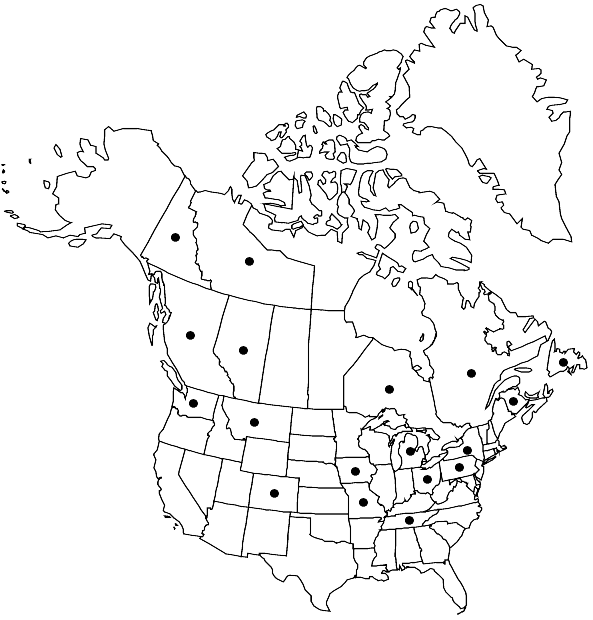Seligeria donniana
Syn. Musc. Frond. 1: 420. 1848,.
Plants tiny, olive green. Leaves linear-lanceolate to ovatelanceolate, stoutly subulate from ovate base, narrowly obtuse; costae ending in apex, filling subula; margins serrulate; leaf cells (1–) 2: 1; perichaetial leaves somewhat larger, similar to vegetative leaves, not much differentiated. Seta 1.3–1.6 mm, straight to slightly flexuose, slender. Capsule hemispheric to turbinate, wider than long, widest at mouth only when old; peristome none, columella immersed. Spores 11–14 µm.
Habitat: Crevices and protected areas of bare calcareous rock
Distribution

Alta., B.C., N.B., Nfld. and Labr. (Nfld.), N.W.T., Ont., Que., Yukon, Colo., Iowa, Mich., Mo., Mont., N.Y., Ohio, Pa., Tenn., Wash., Europe, Asia
Discussion
Frequent in the western Canadian mountains on calcareous cliffs, Seligeria donniana is disjunct to Colorado, and in temperate eastern North America is found from Tennessee north to Newfoundland. The tiny, stiff plants have stoutly subulate leaves with serrulate proximal portions, which are characteristic of this species. The capsules are hemispheric, are relatively small, and have no peristome.
Selected References
None.
Lower Taxa
"wider" is not a number."widest" is not a number.